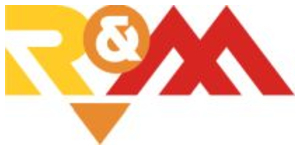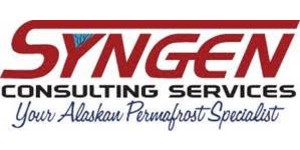- Home
- Membership
- Publications
- Activities & Programs
- Resources
- Login
Permafrost Technology Foundation (PTF)The Permafrost Technology Foundation (PTF) was incorporated within the State of Alaska as a nonprofit corporation for the purpose of developing solutions to permafrost problems. Its goals were to develop practical, real-world solutions for permafrost foundation problems; test designs on buildings that suffer from permafrost distress; and to disseminate information about solutions to homeowners, builders, engineers, bankers, Realtors, and regulatory groups. Reports and ManualsFinal Report: Foundation Stabilization Research Studies on a Foundation on Ice-Poor Permafrost in Fairbanks, Alaska (no pdf) Final Report: Foundation Stability Research Studies on a Foundation on unconsolidated soils, Fairbanks, Alaska (no pdf) Final Report: Foundation Stabilization Research Studies, Foundation with Crawl Space on Loose Soils, Fairbanks, Alaska (no pdf) Final Report on Foundation Stabilization Using a Heat Pump Cooling System at 728 Constitution Road, Fairbanks, Alaska (download pdf) Final Reports on Foundation Stability Research at:
Technical ManualsDesign Manual for Stabilizing Foundations on Permafrost (July 2001) (no pdf) Design Manual for New Foundations on Permafrost (September 2000) (no pdf) Operation and Maintenance Manual for the Foundation Stabilization using a heat pump cooling system at 728 Constitution Drive, Fairbanks, Alaska (no pdf) History
As a result of this first meeting, a group of concerned professional and business leaders in the Fairbanks community met a few weeks later and developed a three point program to address the problems:
It was estimated by knowledgeable Real estate professionals that in the Fairbanks area alone there are as many as 350 homes that were suffering from some degree of damage due to permafrost. This represented an enormous loss to the community of Fairbanks, both to individuals and to lending institutions. A number of subsidence distressed homes had been financed by Alaska Housing Finance (AHFC) and had been returned to AHFC because their mortgages were in default. At that time, AHFC could neither sell nor rent these homes due to State of Alaska governing statutes. The buildings were a liability to AHFC since they had to keep them heated and maintained without a way to recover any of the costs involved in their upkeep. A unique opportunity, therefore, existed for establishing the program using several of these damaged homes belonging to AHFC. A task force was assembled that brought together a wide spectrum of local community leaders: bankers, Realtors, builders, professional engineers, and representatives from AHFC. The task force formulated a plan whereby 10 of the homes would be leased for a nominal fee from AHFC for the duration of the program and then returned to AHFC after the program was finished. To keep the research as close to reality as possible, it was deemed necessary to have the homes occupied during the development program. This created a rare opportunity whereby the technology development could be financed out of the rental income from the 10 homes, allowing the program to proceed without cost to any one group. The proposal was presented to Alaska Housing Finance Corporation in May of 1990. AHFC agreed to support by donating (rather than leasing) 10 permafrost-damaged homes for study and experimental rehabilitation. Next a noncommercial sponsor was needed to administer the program. The Permafrost Technology Foundation (PTF) was founded for this purpose. The Foundation is incorporated within the State of Alaska as a nonprofit corporation for the purpose of developing solutions to permafrost problems. AHFC transferred 10 permafrost-damaged homes to the Permafrost Technology Foundation in August of 1991. In addition AHFC provided a grant loan to provide working capital to repair the houses and to install necessary experimental fixes and instrumentation for the research. Work was immediately begun to bring the houses up to safe, sound, and sanitary conditions so that they could be rented. In accordance with the initial AHFC grant, the homes were to be sold after 7 years of experimentation, or whenever the experiments proved that the foundations had been stabilized. The proceeds of the sale were used to reimburse AHFC for the initial capital grant/loan. As of this writing (March 1999) seven of the homes have been sold and approximately 85% of the grant has been repaid to AHFC. It is anticipated that the remaining three homes will be finished and sold by the summer of 2000. At that time 100% of the grant will have been repaid to AHFC. Technology that has been developed by the foundation includes:
|

 In October 1989, Mr. Scott Wortman of Stutzman Engineering, Mr. Rad Carlson then of Coldwell Banker Co. and Dr. Terry McFadden then of the University of Alaska School of Engineering met to discuss the plight facing over 350 families in interior Alaska whose homes were suffering damage from subsidence due to melting permafrost. These homeowners were faced with a serious problem for which they had little help. The situation they faced was to find professional help to stabilize the foundations of their homes, to finance the work needed to stop further permafrost subsidence, and to repair the existing damage. The problem revolved around the need for standardized engineering solutions for stabilizing damaged housing foundations that are on permafrost. There did not exist an accepted (standardized) procedure for stabilizing the foundation of a building that was undergoing subsidence distress because the permafrost beneath it was melting. Since there were no standards on which to design a fix, engineering firms were unable to guarantee that a specific stabilization technique (a fix) would work. Without such assurances, banks were not willing to make loans for the purchase of properties with permafrost problems. Consequently, houses with damage caused by permafrost were unfinancable making them very difficult to sell. The owners of such houses were in danger of losing their homes and everything they had invested in them, as the inevitable damage slowly destroyed the buildings. A serious need existed for practical engineering solutions for these problems.
In October 1989, Mr. Scott Wortman of Stutzman Engineering, Mr. Rad Carlson then of Coldwell Banker Co. and Dr. Terry McFadden then of the University of Alaska School of Engineering met to discuss the plight facing over 350 families in interior Alaska whose homes were suffering damage from subsidence due to melting permafrost. These homeowners were faced with a serious problem for which they had little help. The situation they faced was to find professional help to stabilize the foundations of their homes, to finance the work needed to stop further permafrost subsidence, and to repair the existing damage. The problem revolved around the need for standardized engineering solutions for stabilizing damaged housing foundations that are on permafrost. There did not exist an accepted (standardized) procedure for stabilizing the foundation of a building that was undergoing subsidence distress because the permafrost beneath it was melting. Since there were no standards on which to design a fix, engineering firms were unable to guarantee that a specific stabilization technique (a fix) would work. Without such assurances, banks were not willing to make loans for the purchase of properties with permafrost problems. Consequently, houses with damage caused by permafrost were unfinancable making them very difficult to sell. The owners of such houses were in danger of losing their homes and everything they had invested in them, as the inevitable damage slowly destroyed the buildings. A serious need existed for practical engineering solutions for these problems.















